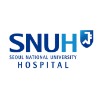
Reduced Side-Effects Of Photodynamic Therapy For The Treatment Of Moderate To Severe Acne (i-PDT)...
Acne VulgarisThis research study aims to compare different methods for helping difficult to treat or scarring (cystic) acne, ALA-PDT and i-PDT. There is an investigational procedure called photodynamic therapy (ALA-PDT) that has been reported to be very efficient for acne treatment since 2000. Photodynamic therapy (PDT) uses a drug called ALA (aminolevulinic acid), which is marketed as Levulan®. Levulan® is applied directly to facial/back acne. This is the way that it is usually applied. Levulan® is left on the skin for three hours so the skin can absorb it. Next, the skin where the Levulan® was applied is exposed to a red light for activation. The sebaceous glands get obstructed and inflamed causing acne. ALA gets down under your skin through the skin pores to where the glands are. PDT destroys the glands reducing the acne lesion. Levulan® is absorbed by normal skin surrounding the oil glands. Therefore, this procedure also has some side effects. Some of the side effects include pain, burning sensation during the procedure, and redness, tenderness, and swelling after the procedure. At Massachusetts General Hospital's Wellman Center for Photomedicine, the investigators developed another procedure called inhibitory-PDT (i-PDT) that is similar to ALA-PDT. i-PDT is aimed at reducing the side-effects of ALA- PDT. The difference between these two procedures is that i-PDT uses a light source that will prevent Levulan® accumulation in the normal skin surface. The investigators would like to find out if Levulan® will be placed only inside the sebaceous glands.

Dose Range Study of CD5789 in Acne Vulgaris
Acne VulgarisTo assess the efficacy and safety of different concentrations of CD5789 cream in participants with acne vulgaris for the purpose of dose identification.

EGCG Improves Acne by Modulating Molecular Targets
Acne VulgarisEpigallocatechin-3-gallate (EGCG) may improve acne vulgaris major polyphenolic constituent in green tea known as potent anti-carcinogenic, anti-inflammatory, anti-proliferative, and antimicrobial activities lipid-lowering and antiandrogenic properties was reported EGCG can improve acne vulgaris via one of the above mentioned actions.

"Clinical Trial to Determine the Efficacy of Vitamin D for Acne Therapy"
Acne VulgarisThe purpose of this study is to study the effects of topical Vitamin D cream (Calcipotriene, also known as Dovonex) on acne. The information gained from this study may lead to new treatments for acne. In this study, Calcipotriene will be compared with a placebo, a cream that looks like Calcipotriene, but contains no active ingredients.

Study to Evaluate the Safety, Tolerability and Pharmacokinetic of Single and 14 Day Repeat Topical...
Acne VulgarisThe proposed indication for GSK1940029 is topical treatment of acne, the early clinical plan will evaluate the irritation potential of GSK1940029 (Study SCD117225 - 3 Part study); and safety, tolerability and pharmacokinetics of GSK1940029 (Study SCD117226 - 2 Part study), after topical administration on healthy subjects and acne patients. Study SCD117226 will be a randomized, single-blind, dose-rising study to evaluate the safety, tolerability and preliminary pharmacokinetics of single and 14 day repeat topical applications of GSK1940029 gel on the intact skin of healthy human subjects. Part 1: (single-dose) subjects will receive 0.3% or 1% GSK1940029 (or matching vehicle), as a single approximately (App) 24 hour (h) (22.5h) application to a surface area of 400 square centimeter (cm^2) (0.3%), 400 cm^2 (1%) or 1200 cm^2 (1%), respectively, in each of three sequential cohorts. Part 2: (repeat-dose) subjects will receive 0.3% or 1% GSK1940029 (or matching vehicle), as 14 daily App24h (22.5h) application to a surface area of 400 cm^2 (0.3%), 400 cm^2 (1%) or 1200 cm^2 (1%), respectively, in each of three sequential cohorts. Parts within Study SCD117225 and Study SCD117226 will have interdependencies. No significant primary irritation signal in Study SCD117225 Part 1 (primary irritation) would allow initiation of Study SCD117226 Part 1. Once safety, tolerability and exposure information are determined in Study SCD117226 Part 1, then Part 2 (cumulative irritation) of Study SCD117225 may be initiated along with Part 2 of Study SCD117226. No significant cumulative irritation signal (study SCD117225 Part 2) in combination with adequate 14-day safety (study SCD117226 Part 2) would allow initiation of Part 3 (facial irritation) of Study SCD117225.

A Study to Compare Clindamycin Phosphate and Benzoyl Peroxide Topical Gel 1.2%/2.5% to Acanya® Topical...
AcneThe objective of this study was to evaluate the efficacy and safety of Perrigo's test formulation of Clindamycin Phosphate and Benzoyl Peroxide Topical Gel 1.2%/2.5% compared to the already marketed formulation, Acanya gel in patients with acne vulgaris.

Split-face Tolerability Comparison Between Adapalene-Benzoyl Peroxide Gel Versus Tretinoin Gel
Acne VulgarisTo compare the tolerability of Epiduo® (adapalene and benzoyl peroxide) Gel 0.1%/2.5% to Retin-A Micro® (tretinoin gel) microsphere when used by subjects with acne vulgaris for 3 weeks in terms of local tolerability parameters (erythema, dryness, scaling, stinging/burning) and preference.

Efficacy and Safety Study of Gevokizumab to Treat Moderate to Severe Acne Vulgaris
Acne VulgarisThe purpose of this study is to determine whether gevokizumab is effective in the treatment of moderate to severe acne vulgaris.

Study of NVN1000 Topical Gel and Topical Gel Vehicle in the Treatment of Moderate to Severe Acne...
Acne VulgarisAcneThe primary objective of this study is to compare the tolerability, safety and efficacy of NVN1000 Topical Gel and Topical Gel Vehicle in the treatment of subjects with moderate to severe acne vulgaris.

Comparing OTC Acne Treatment to Prescription Regimen
Acne VulgarisThis research is being done to find out the safety and efficacy of two acne creams, Effaclar and Benzaclin when used twice daily with a topical retinoid. Effaclar and Benzaclin are FDA approved for the treatment of acne.
